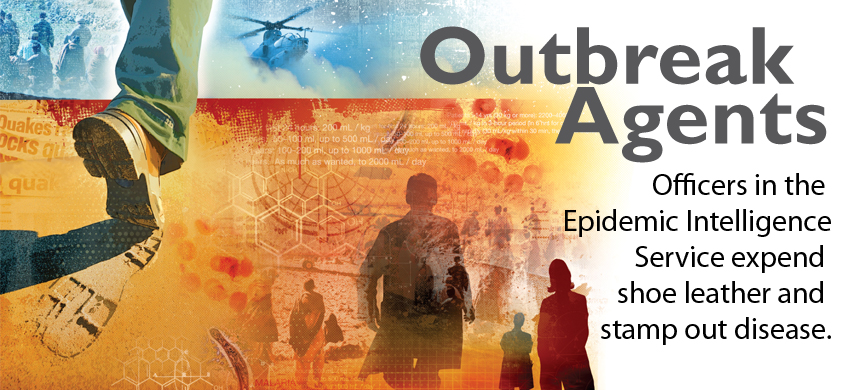
The EIS would have hit the road running—except that the Korean War was raging and most medical school graduates were being ordered to serve in military hospitals, leaving the new agency short of recruits. A year later, on behalf of the EIS, the CDC persuaded the Pentagon to exempt would-be EIS officers from being sent to the front. For decades after, young medical men who would have been shipped off in fatigues were instead dispatched to CDC headquarters in Atlanta, or to local and state health departments to investigate diseases. They called themselves the Yellow Berets.
Once in training, they got a crash course in Langmuirology. In teaching the rudiments of epidemiology, Langmuir honed disease surveillance to a fine art. Epidemiologists count infected people, he taught, and compare that number with that of a population, or in the case of some diseases, with a number of people usually infected at one time. Then they use division to find the extent of an outbreak. “Stripped to its basics,” Langmuir wrote, “epidemiology is simply a process of obtaining the appropriate numerator and denominator, determining a rate, and interpreting that rate.” He believed that the paramount questions epidemiologists in the field faced were: Who in a certain population was affected? When were people exposed to the thing that made them sick, and what was that thing? When did they become ill? Where did the epidemic happen?
Along with indoctrinating his students on other facets of epidemic-sleuthing—biostatistics, disease control, how to properly use a lab—Langmuir placed a premium on publishing their findings in reputable journals, and with communicating with the media and the public during the course of an outbreak. He insisted that second-year EIS officers take part in “conferences” during which they’d tell tales from the field in a mere 10 minutes, to be followed by a grilling from faculty and newer EIS professionals.
“I can spot when a former EIS person is presenting a paper or when I’m reading one right away,” says Pendergrast. “The style is distinctive. They use clear, declarative sentences. If the presentation takes 10 minutes and is airtight, it’s a dead giveaway.”
The time-compressed delivery of information is an example of Langmuir’s belief that epidemiology is most effective when feverishly applied in the field, and not when scientists comfortably ensconced in academia conjure elegant studies. He preached speed and thoroughness. Those who have followed his example have come to embody the EIS logo: a globe circumscribed with lines of latitude and longitude, and superimposed with a gum-soled shoe with a hole in the bottom.
“I’m a shoe-leather epidemiologist because I’ve had to do it in the field over and over again,” says Noreen A. Hynes, SPH ’79, an associate professor of infectious diseases at the School of Medicine. Hynes served in the EIS from 1986 to 1988 but has investigated diseases—everything from flu outbreaks in the South Pacific to leprosy and diphtheria in Africa to syphilis in Baltimore—for much longer at the CDC. “There’s a big difference between academic epidemiology and applied epidemiology,” Hynes says. “In the academy, you have time to design and implement a study. You have a chance to aim at the center of the target, the bull’s-eye. At the CDC, you have to move quickly to identify the source and the risks. You’ll take just hitting the target. You don’t have the luxury during an outbreak of listeria in processed meats, when you’ve had several deaths and miscarriages, to develop a study. You just have to get as close to the target as you can.”
ALMOST FROM THE BEGINNING, the EIS has expanded its mission beyond tracking down, identifying, and containing epidemics. Even as Langmuir continued to send his troops into battle against infectious disease, those scientists would find more ways to apply his rules. Bob Mellins, an EIS officer investigating a suspected outbreak of encephalitis in St. Louis in 1952, instead found that many of the children were suffering, and sometimes dying, from lead poisoning. As a result, Mellins became the first EIS agent assigned to a noninfectious disease. A year later, he started the nation’s first poison control center. The reach extended even further. A decade later, Langmuir started assigning men to investigate a special interest of his: population and human reproduction.
Langmuir also started sending his men (they were all men back then) overseas. In 1958, he asked the State Department to allow EIS officers to investigate major eruptions of smallpox and cholera in what was then East Pakistan (now Bangladesh). He was denied permission—until State got word that the Soviet Union would be sending in physicians. The EIS quickly became an operation of international significance. Today, about 70 percent of its officers investigate outbreaks and public health issues around the globe, as well as within the United States.
